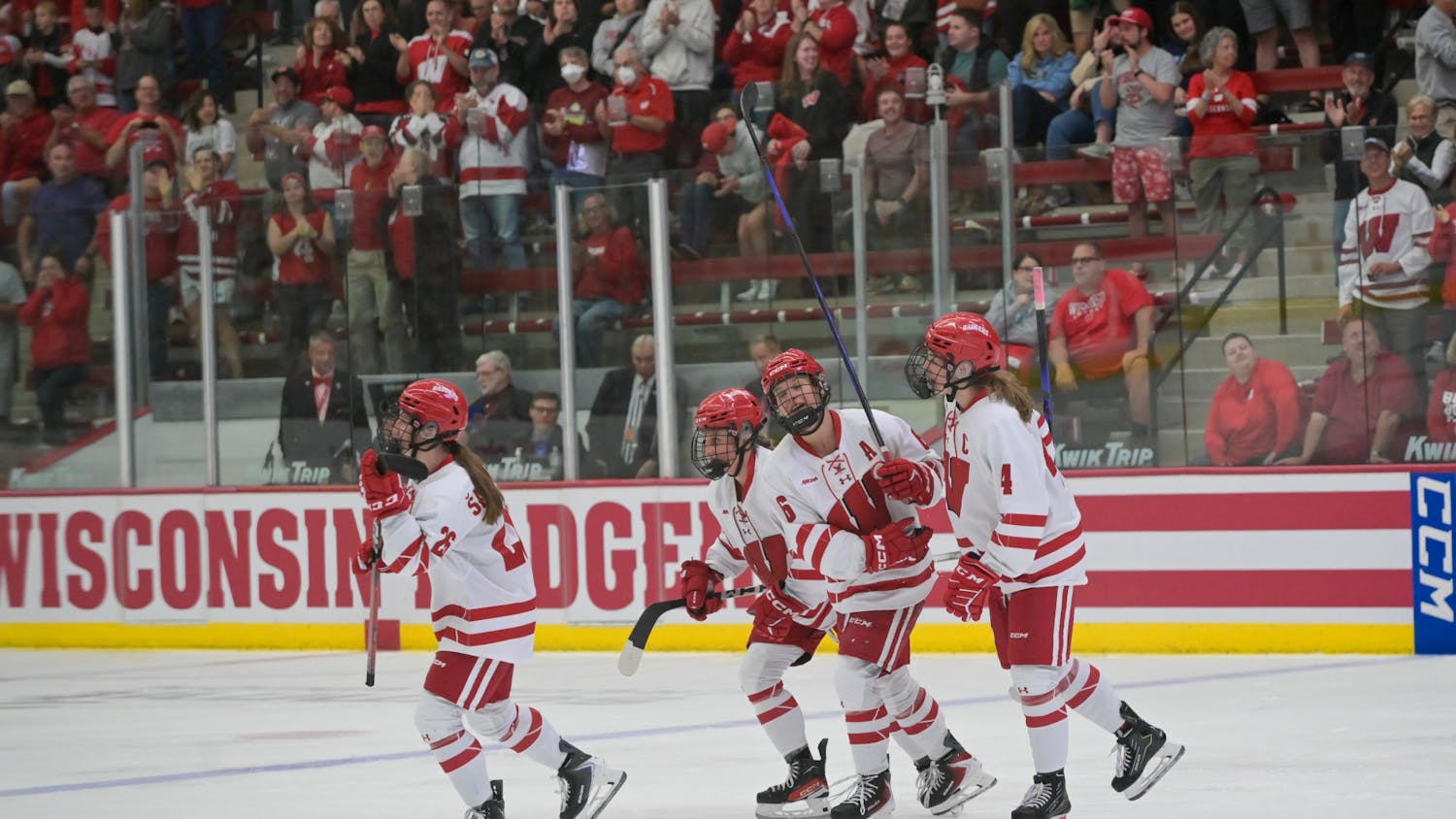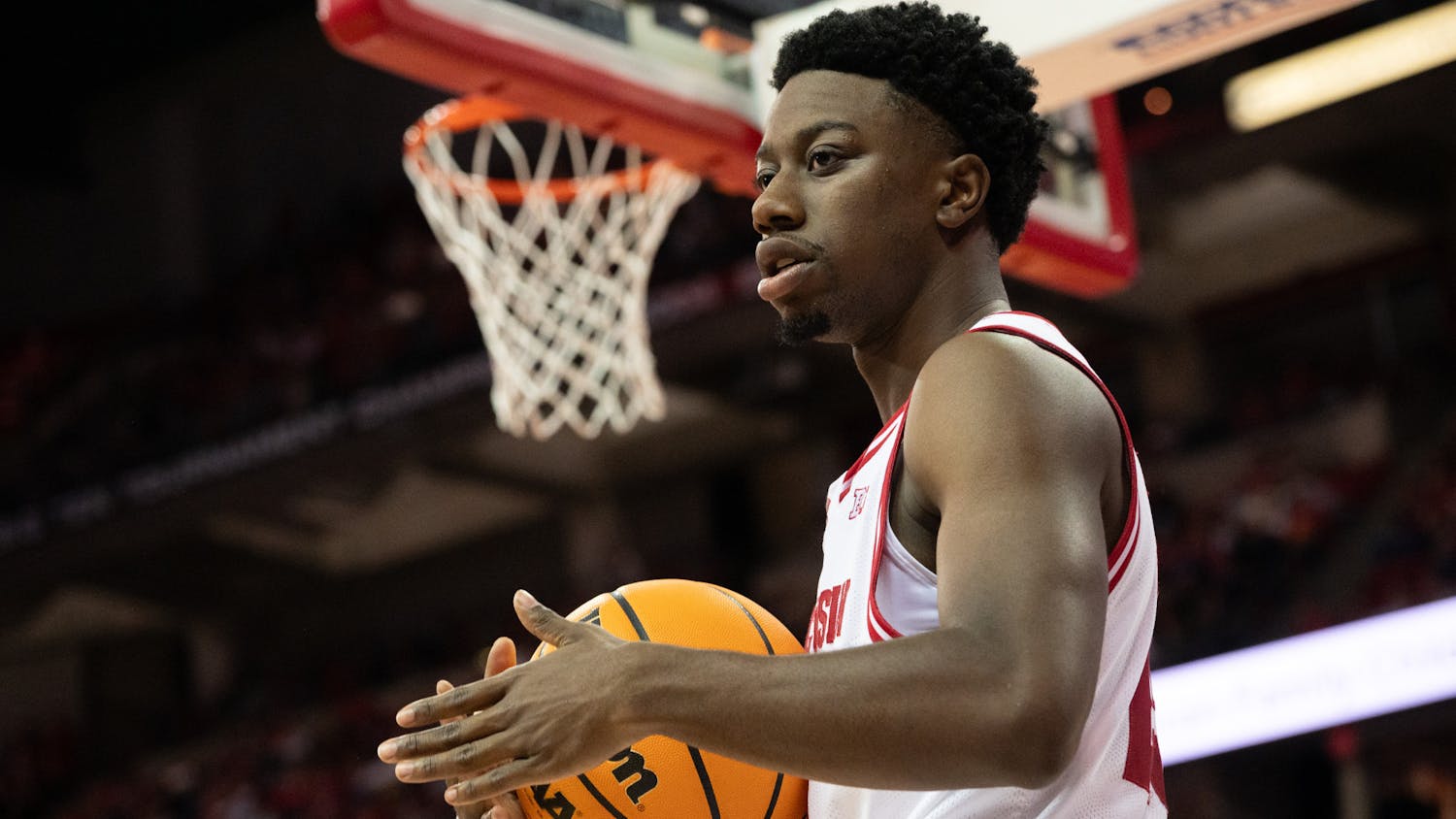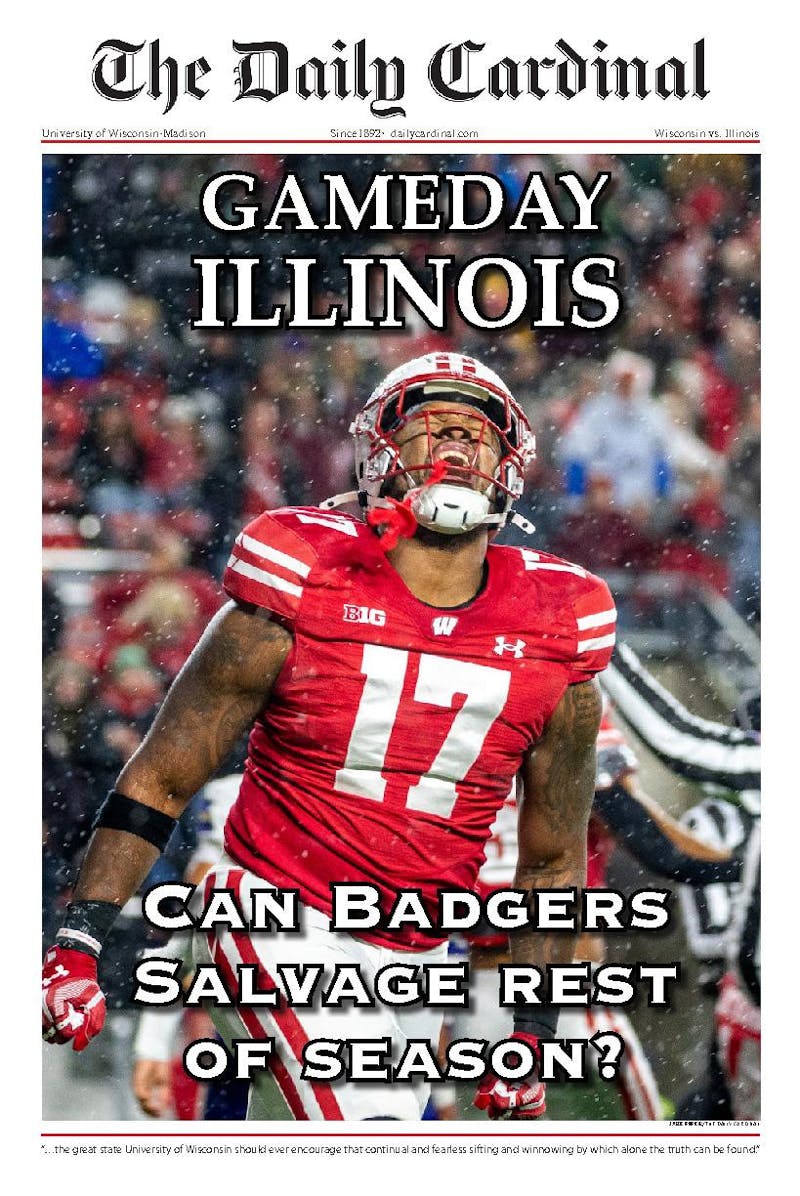Last fall, when Bronson Koenig arrived at the Standing Rock camp in North Dakota and exited the trailer that he and his brother Miles had driven 14 hours in, it was nearly midnight. But as he got out of the vehicle in the dead of night, a man from behind was still able to recognize the then-Wisconsin Badger guard.
“Hey, is that Bronson Koenig?,” the man called out.
Everywhere Koenig went during his weekend trip he was recognized. A casual clinic on a dirt basketball court with a leaning hoop and a crooked rim turned into a 50-person training session. His indoor clinic featured a gym filled to capacity with every basket in use.
The former Wisconsin guard describes his trip to Standing Rock last fall as an “eye-opening” experience. It was the moment Koenig says he truly realized the impact he was having — not just in the Native American community in Wisconsin, but throughout North America.
But the link between the sport and Native American culture extends far beyond Koenig. While Native American basketball role models are few and far between, the sport does have a unique significance in many Native communities.
Koenig did not grow up on a reservation. Instead he was raised by a German father and Ho-Chunk mother in La Crosse, Wis. But on many reservations, Native Americans play basketball, often in a distinct style.
“Rez ball,” according to the New York Times, makes Mike D’Antoni’s seven-seconds-or-less system look like a slowdown offense. The frantic pace, constant defensive pressure and run-and-gun style helps create a brand of basketball that is rarely replicated. The Native American Basketball Invitational holds annual rez ball tournaments in the Southwest United States and troves of Native “rezballers” attend such games and tournaments looking to see the unique basketball style on display.
But on a more granular level, Don Stanley, a professor in UW’s Department of Life Sciences Communication that has family with Oneida Nation heritage, has seen the universality of the sport make a major difference first hand as he has traveled to various reservations and worked with children. Years ago on a trip to the Bad River Reservation, Stanley recalls using basketball as the means to engage the group he was trying to get to know.
“All you need is a hoop and a ball,” Stanley said. “You don’t need fancy equipment. You don’t need fancy fields. You don’t need anything. So, socioeconomically, virtually anybody can play the game.”
Stanley adds that the lack of exercise and improper care for the body and mind can often be problematic for Native American youth, and contends that basketball can make a major difference on inspiring healthy habits.
Stanley first met Koenig on one of Koenig’s first days as a freshman. They talked about Native American heritage and history. They went to drum circles and Pow Wows together. And the duo still talks every few weeks about virtually everything — except basketball.
Stanley has seen Koenig develop as a basketball player and, more importantly to Stanley, as a role model. But he admits that he thinks as Koenig’s career progresses, he should continue to emphasize the importance of dieting correctly and exercising frequently, two pitfalls on many Native American reservations.
Will Decorah, a former teammate of Koenig’s at UW and a fellow Native American, adds that Native Americans are often not seen as the most athletic group of people, but having prominent basketball players like Koenig and Shoni Schimmel are already starting to inspire the next generation of Native American athletes.
“It would have been extremely nice to have Native American role models to grow up to,” Koenig told the Daily Cardinal. “But I’m just really proud that I can be that person for a ton of Native American kids.”
Even while Native American participation on the collegiate level remains low — in 2015-’16, the lone year that Decorah and Koenig shared the court together, there were only 21 American Indian/Alaskan Natives in Division I men’s basketball according to the NCAA — having just a few Native American role models can make a difference.
Koenig constantly hears from Native Americans from all over North American on social media providing words of encouragement. Decorah, a two-year manager at Wisconsin and an active player for one season, also received a flood of support when he was still with the program.
The two became local celebrities at many of the Native American gatherings they attended together. People would flock to speak with them and pose for pictures, ask questions and thank them for their impact in the community.
In mid-December, when Koenig, now a member of the Grand Rapids Drive of the NBA G-League, returned home to play the Wisconsin Herd, he gave out more than 30 tickets to friends and family. All around the stands, Native pride resonated throughout Menominee Nation Arena.

“It’s nice to have all that support from the Native community,” Koenig told reporters after the game.
“At any games we go to, there’s usually a Native tribe there or people who are Native American. And it’s something that younger kids can look up to,” Willis added.
And, while Koenig and Decorah didn’t grow up on reservations, they both understand more about how Native Americans live today and about their cultural heritage and continue to see basketball as a means to connect with people.
From rez ball, to Koenig and Stanley uniting individuals at clinics and workshops, the sport clearly has a role in Native American communities, no matter if the basket is leaning or straight and the court is made of parquet wood or merely a patch of uneven dirt.
As Stanley says, “It really just brings people together.”
Editors note: A previous version of the story said that Don Stanley was a member of the Oneida Nation. The story was later amended to say that he has family with Oneida heritage.






